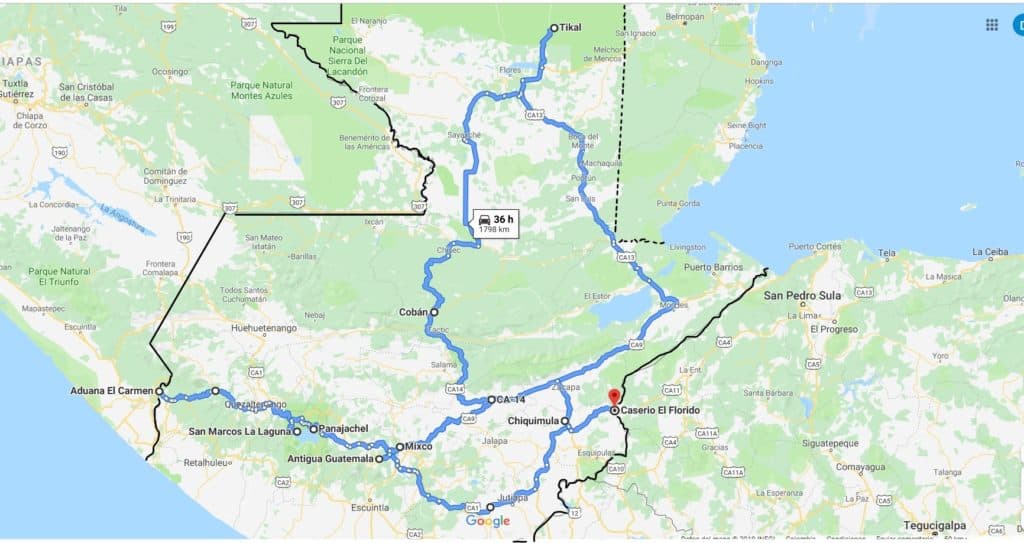Guatemala
Guatemala is not a large country but what it lacks in size, it makes up for in diversity. Towering volcanoes, flat grasslands, humid jungles, lush Caribbean coastline and the pounding surf of the Pacific defines this land. Each of these areas developed into self-sustaining local communities which have their unique cultures, clothing styles, crafts and festivals. It is a traveler’s paradise. The amount of tourism and its influence is still in its infancy in most areas, which is fortunate for us. People are not yet jaded, tourists are welcomed, and our BIG camper is a novelty. When we find ourselves squeezing through tiny streets the locals rush over to assist in any way that they can. No one rushes up to sell you a souvenir, no one is hawking a resort or restaurant or an expensive tour. It is refreshing and very enjoyable.
We both have given rave reviews to Mexico throughout the years, but I confess that I am drawn to the more subdued life in Guatemala. In Mexico, loud, raucous music is a major component of their lives. No restaurant, store, vehicle or public area is ever quiet. Firecrackers and fireworks are used to celebrate everything and at all times of the day or night. We often wondered who or what was being celebrated at four am on a Tuesday in the middle of nowhere. Drivers are apparently taught that one hand must be honking the horn whether you are in motion or not. People are busy, there is a constant vibe that hums. I find the people here in Guatemala to be much calmer and the atmosphere is more relaxed. People are always working but the pace does not feel as frantic. This changes when you are on the highway. The Guatemalans are just as aggressive drivers but at least they don’t use their horns as much. A common means of transportation for the locals is to travel by Chicken bus, we were told you only took one of these colourful vehicles if you had a death wish. The drivers of these elaborately decorated buses tend to ignore all rules of the road. It is definitely true. The other aspect of life in Guatemala that I appreciate is the strong ties to their Mayan heritage that is evident everywhere. In smaller towns, the women and girls all wear traditional clothing, style their hair the same way and use cooking methods and recipes from their past. In remote areas, the men also follow these traditions. In Mexico, the American influence has obliterated most of these customs.
San Marcos La Laguna
The first day of driving in Guatemala was spectacular! This is an extremely rugged area, huge mountains, deep gorges and very lush vegetation. When we reached Lake Atitlan we had the steepest road down with the tightest switchbacks we have ever seen.

This was followed by having to inch through two small towns and then negotiate a narrow track to park. It was SO worth it. We had an awesome view of the lake which is surrounded by volcanos, one of which was active so you could see ash plumes in the day and lava spouts at night.
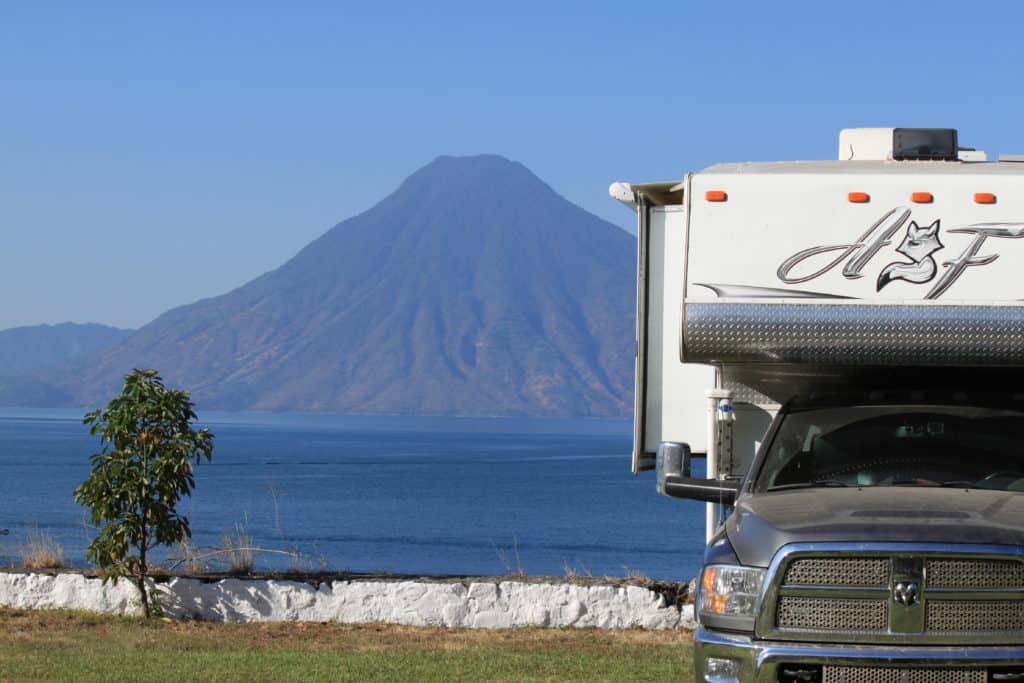
The best part was the 20-30 people who were staying there, most of whom were Canadian. It felt like home. We took Spanish lessons, visited other small lake towns by water taxi, shopped, wined and dined and got to know some delightful people. The town we were at was San Marcos La Laguna and is a hippie enclave, so it had an interesting vibe. I liked San Juan as it has all the textile collectives and art galleries. We had great food in San Pedro and we were warned away from San Paulo.
The tuk-tuks here were especially cute and they were all painted in bold designs and each one was named after a girl, how sweet is that!
Panajachel
Reluctantly, we took our leave from San Marcos and started towards Tikal in the north-east. First, however, we needed to restock our supplies so we went to Panajachel on the other end of the lake. It was a mere 6 km. by water but in our case, 3 hours by road. There was a local hotel with an RV Park where we could park, it was right on the lake and had beautiful gardens.
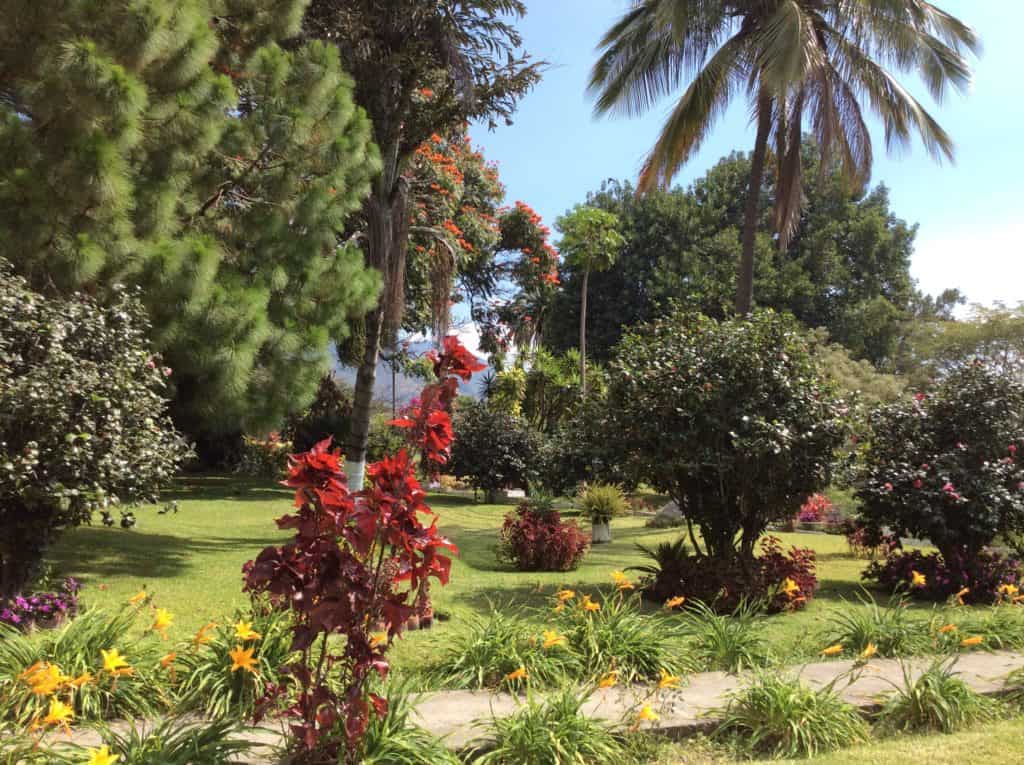
We were able to watch indigenous people fishing, mending nets and socializing down on the beach in front of us. All the women and girls carry everything on their heads. Except for their babies who are slung across their backs inside a shawl. In Mexico, the babies were also held by a shawl but they were positioned over mom’s hip.

Everyone cooks on wood burning fires so you see people trudging along using a tump-line to haul heavy bundles of sticks on their backs. Sadly, a lot of this work seems to be done by the elderly.
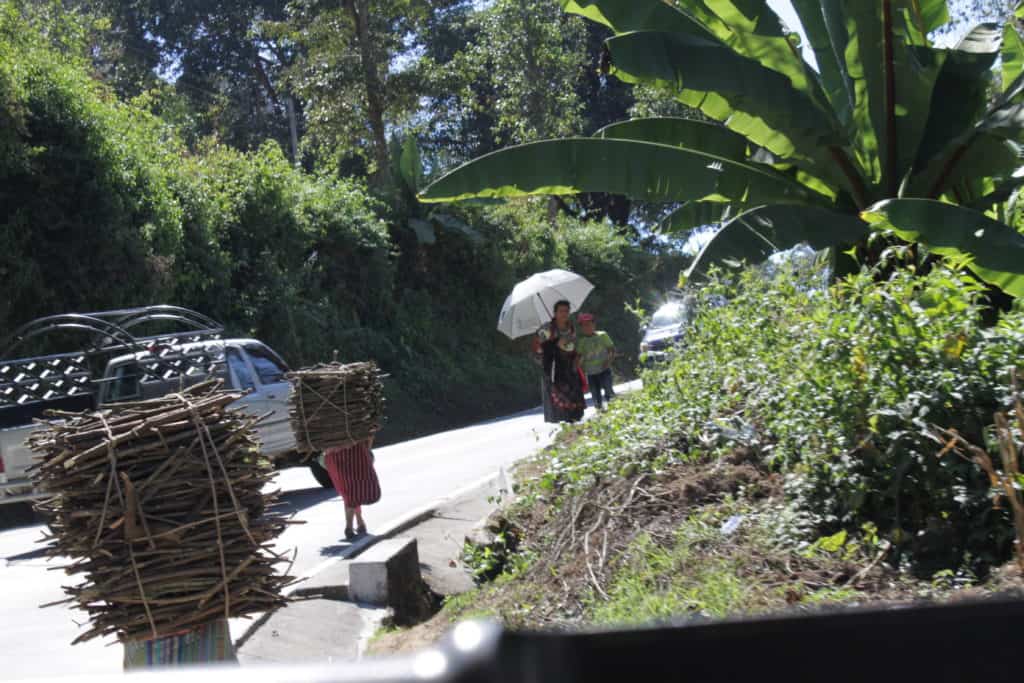
Quetzal Reserve
We were very pleased with the condition of all the roads here. They seem to have been recently paved and have fewer speed bumps than up north, yea! We varied between 1,500-3,000 meter elevations so Doug had lots of practice steering and gearing. The local transportation in rural areas is done with pick-up trucks. People clamber in and everyone stands within a metal frame in the back. It looks very squishy.
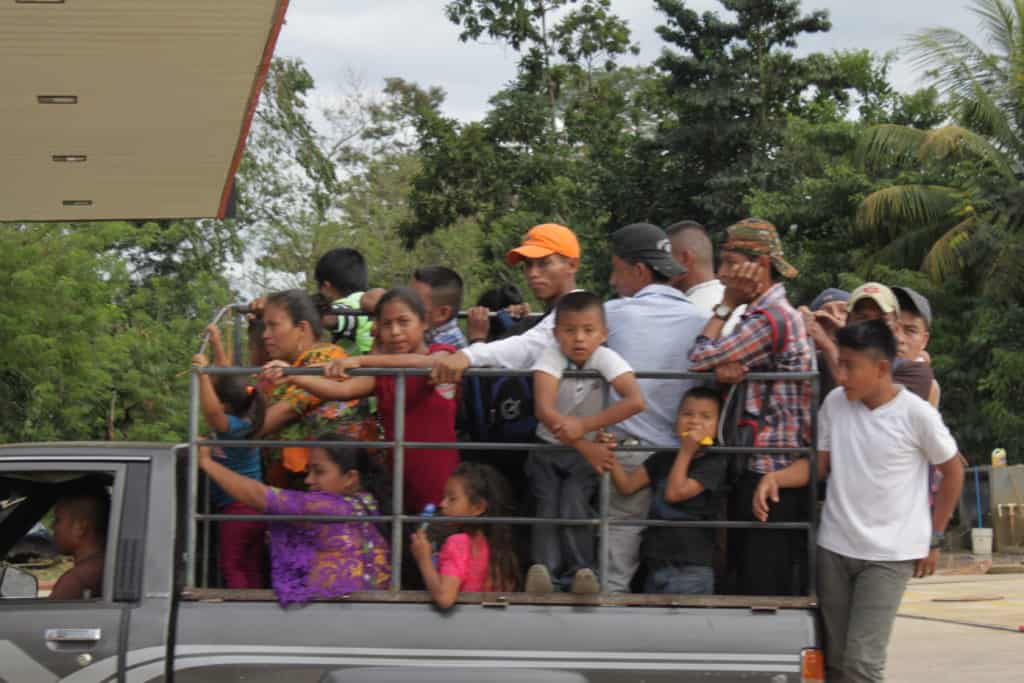
As we passed small towns, you would often glimpse a cemetery. They look like miniature towns as each mausoleum is a brightly-coloured cement structure all lined up along paths.

When we arrived at the Biotopo del Quetzal Reserve it was obvious that we could not enter their gate. Obligingly, they offered their work yard. It was a tight space for us, luckily they only had one small truck in there and all the workers came to work on motor scooters. The next morning, we headed off in search of the elusive Quetzal. Five hours and thousands of steps later all we had found was silence. It was the quietest forest I had ever been inside. That night it poured rain, very LOUDLY. Hello, February.
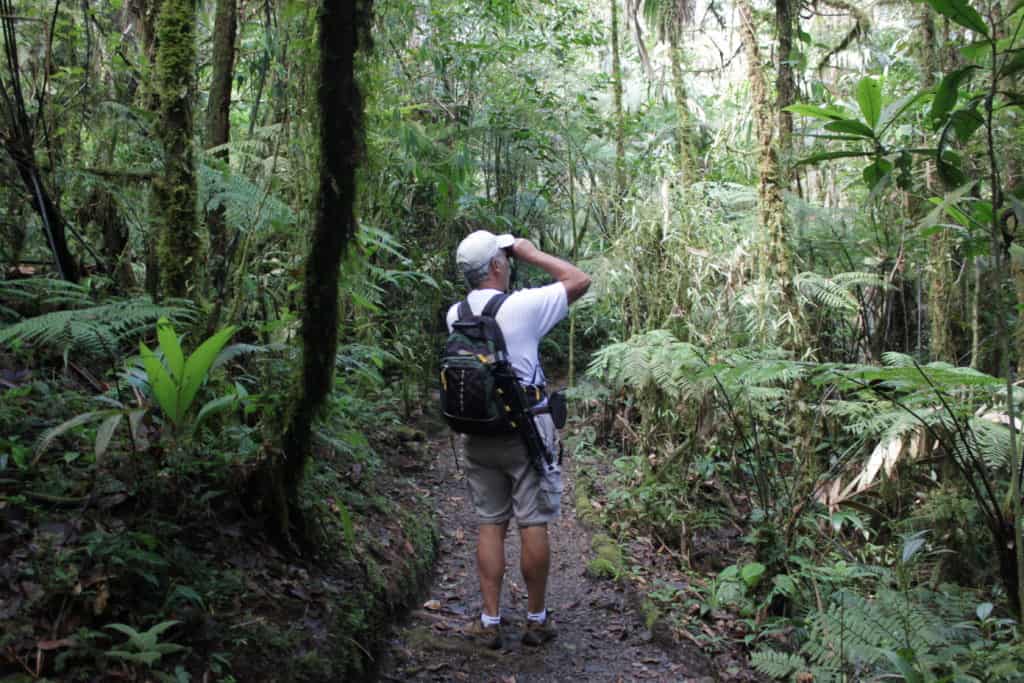
Muck b’ilja
Our next campsite was the Garden of Eden. Beautiful lush grounds beside a quiet river at the base of steep mountains. A French Canadian couple were there but our conversation attempts were tres difficil. They did point out the keel-billed toucans which resided there but they didn’t have to tell us about the Howler monkeys. I had the overwhelming feeling that we had arrived at Jurassic Park.
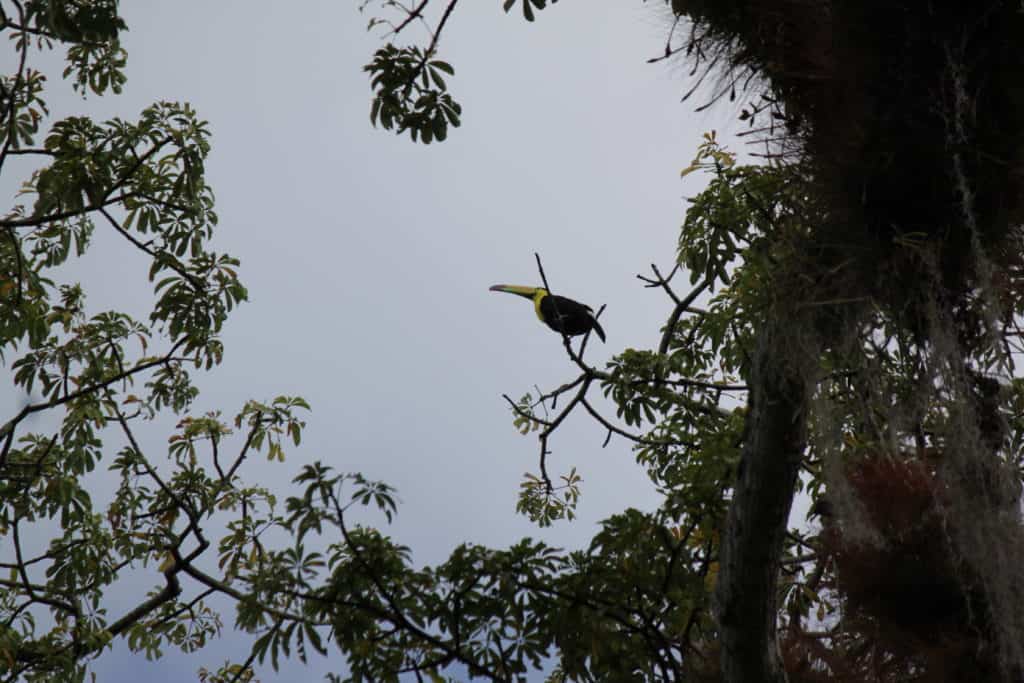
Ixpanpajul
As we drove into the state of Peten, the landscape changed into rolling, then flat open country. Now we saw herds of Brahman cattle and palm oil plantations. We crossed the Rio Passion on a tiny ferry and eventually got to Ixpanpajul. This is a natural park and offers zip lines, hanging bridges, night safaris, horse-back rides and wandering donkeys. We opted out of all the pricey stuff. It felt strange to have the whole park to ourselves. But wait, I spoke too soon. We were with the Howler monkeys again.
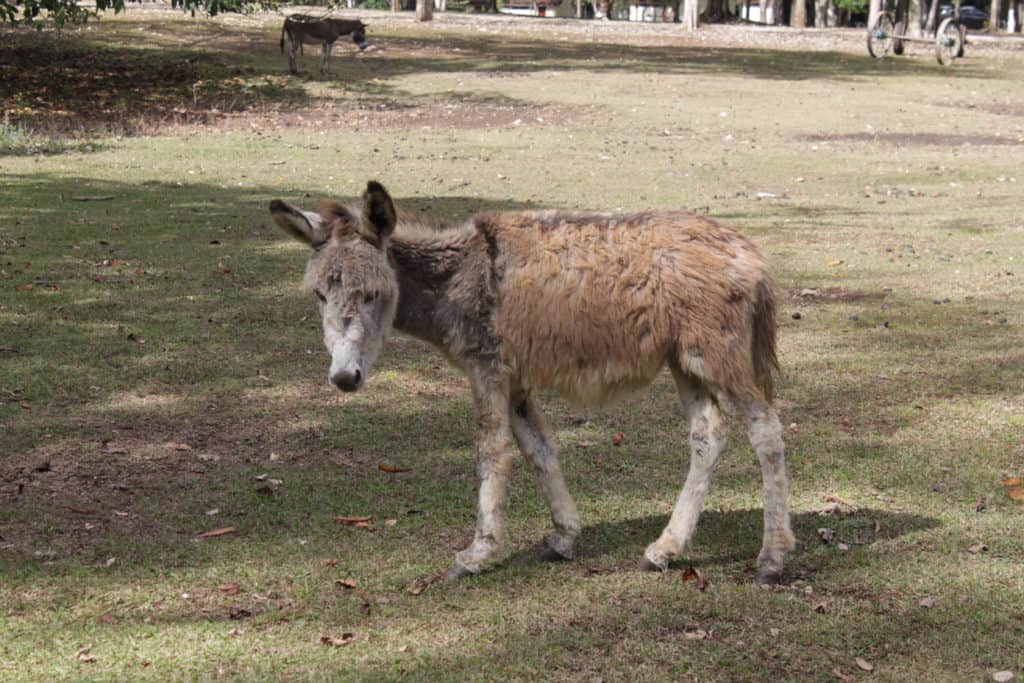
Tikal
I have longed to see Tikal so this was a bucket list experience. The key to making it so special, however, was our great guide, Amado. I wish I could have recorded the entire four hours as the man never stopped showing and explaining. In the interest of space I think I should just do bullet points of my favourite bits and bytes.
-Ceiba or Kapok tree; National tree, connects sky and underworld, makes cotton
-Chicle or Sapodilla; they collect the sap to make gum
-Mahogany; carved door lintels which were still perfect when pyramids were opened
-Strangler vines always curl to the North first so you can use it as a compass
-Ramon or Breadfruit; fruit is used for flour and mules eat the leaves
-Allspice; leaves for tummy upsets and bark for flavour
Other plants provided sandpaper, glue, incense, bug repellents and food
We saw numerous animals, two kinds of Trojans, Agouti, Coatimundi, Golden Oriole, Leaf Cutter Ants, Termites, Wild Turkeys, Howler and Spider Monkeys.
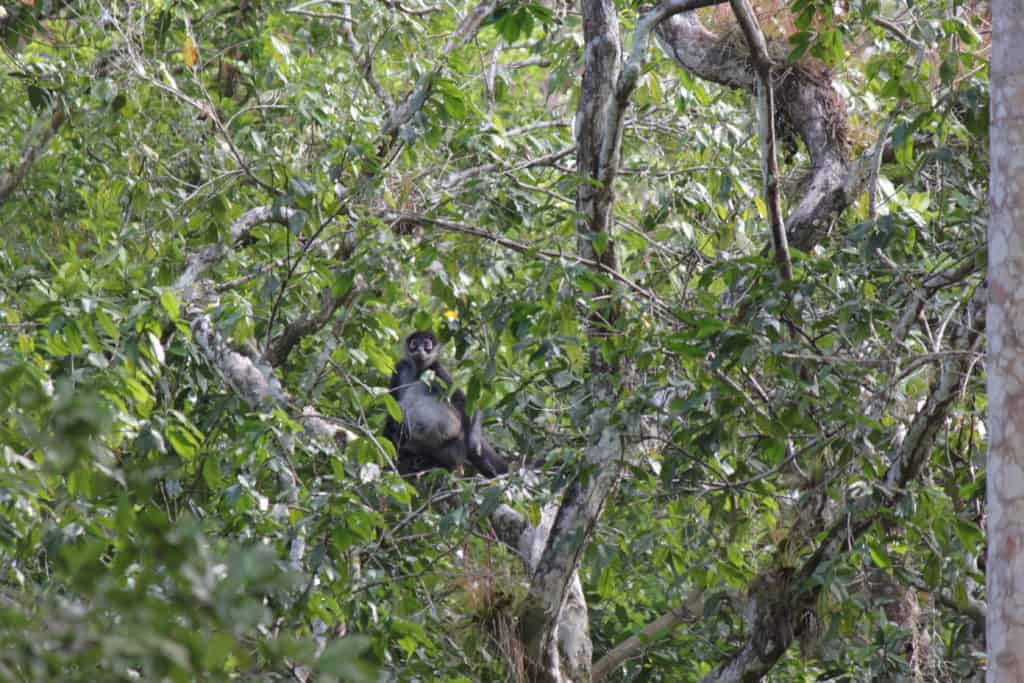
The Ruins:
Tikal once had a population of 250,000 and was the primary trade and administrative hub for the Mayans. It lasted for 1000 years but eventually outgrew itself. They cleared too much of the forest which altered the rain patterns. The result was insufficient water for a city of it’s size. Tikal means “place of the voices “, in certain spots clapping will make an echo that sounds like a quetzal’s call. How cool is that? Tikal was used for a Star Wars scene and we actually recognized it, do you recognize it too? We got to climb the highest temple. It is 64.6 metres high and the view is stunning. In it’s heyday, over 3,000 structures covered 16 square kilometres and the entire city was built on raised platforms because the water table was so high. They processed lime in huge kilns to line the depleted quarries and then used these for water reservoirs. They also charted the skies into 400-year cycles, which is why people thought they had erroneously predicted the end of the world. It was only the end of a cycle. After a king’s death they would inter the body, then later they would exhume it and carve scenes of his accomplishments on his bones. The bones would be returned and accurately laid out in his tomb.
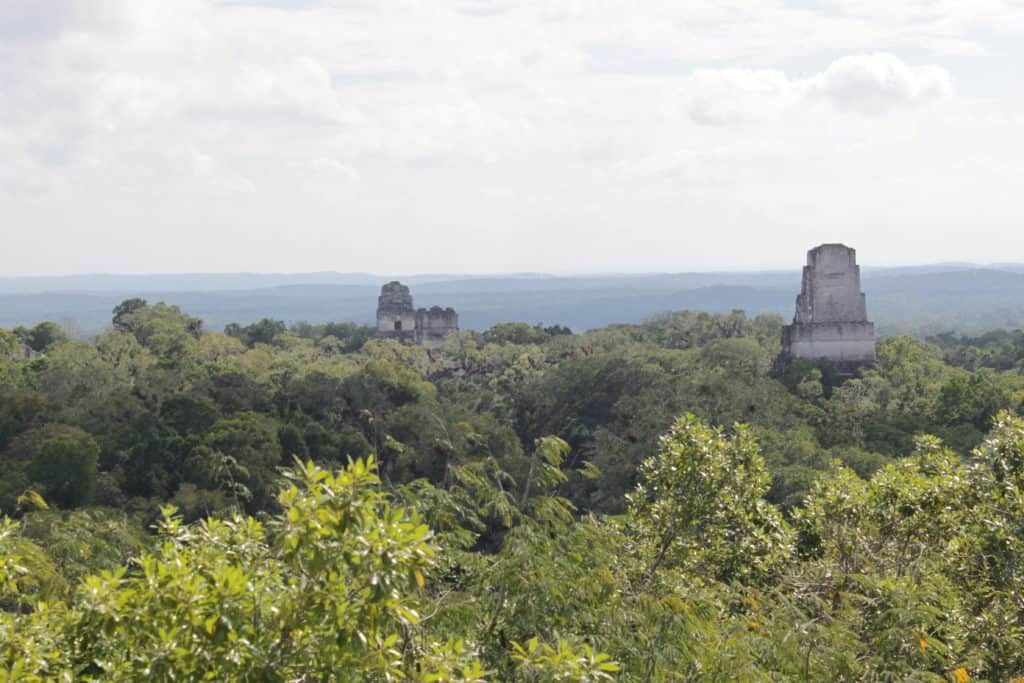
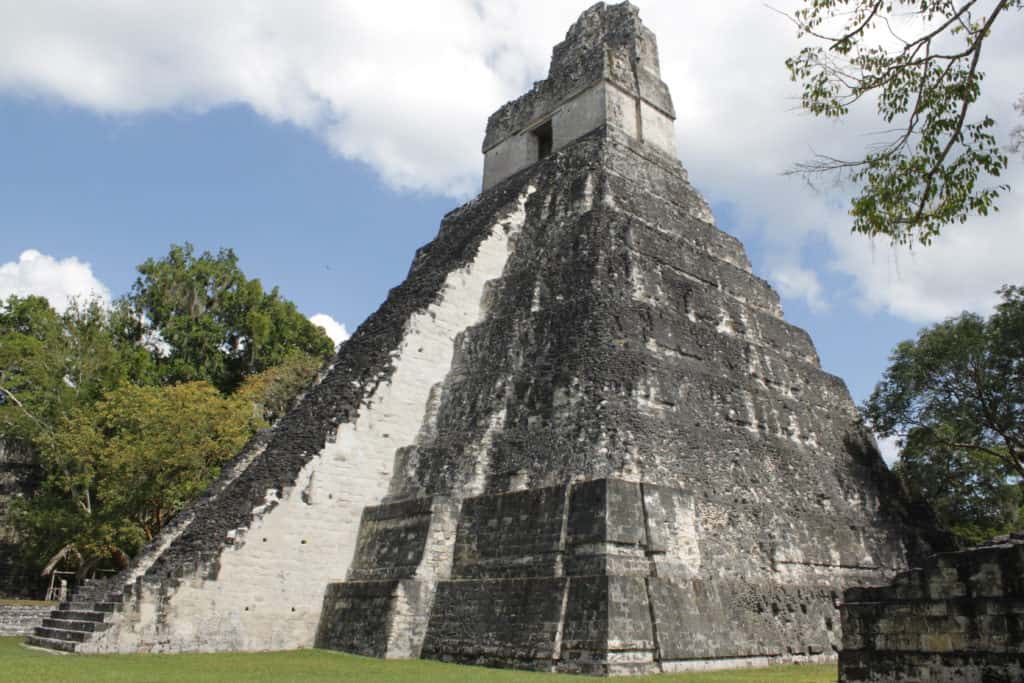
Rio Dulce
On our way to Rio Dulce we hit two speed bumps at approximately 60 kph. There will be more about this later (foreshadowing). We camped inside Ram Marina so as soon as we set up we headed to the docks to see the boats. The first one we saw had a Canadian flag and was registered in EDMONTON, Alberta. How could I resist that!
We chatted there for quite awhile and were invited to join them for dinner and a movie. We took a water taxi across the river and arrived at a restaurant on stilts over the water. This was an outing arranged for people at the marina so there were over 30 gringos. It was a warm evening, the food was good and the company was very nice.
The movie was ROMA, nominated for several academy awards. Even the free popcorn couldn’t improve our opinion of this depressing movie. Nevertheless, it was a fabulous and totally unexpected adventure.
As we got ready to leave the next morning, Doug discovered the damage caused by the speed bumps and how severe it really was. Our rear tie-downs were wrecked, especially the driver’s side anchor plate which had been ripped out of the camper. My first thought was “thank god we are in a marina, they will have materials, tools and expertise”. Doug spent the next week finding parts, ripping it apart and even borrowing a drill from a friendly neighbor. Luckily, they had an air conditioned room for guests with books and wifi. Guess what I did! At least we fit in, our land yacht was up on blocks being fixed just like everyone else.
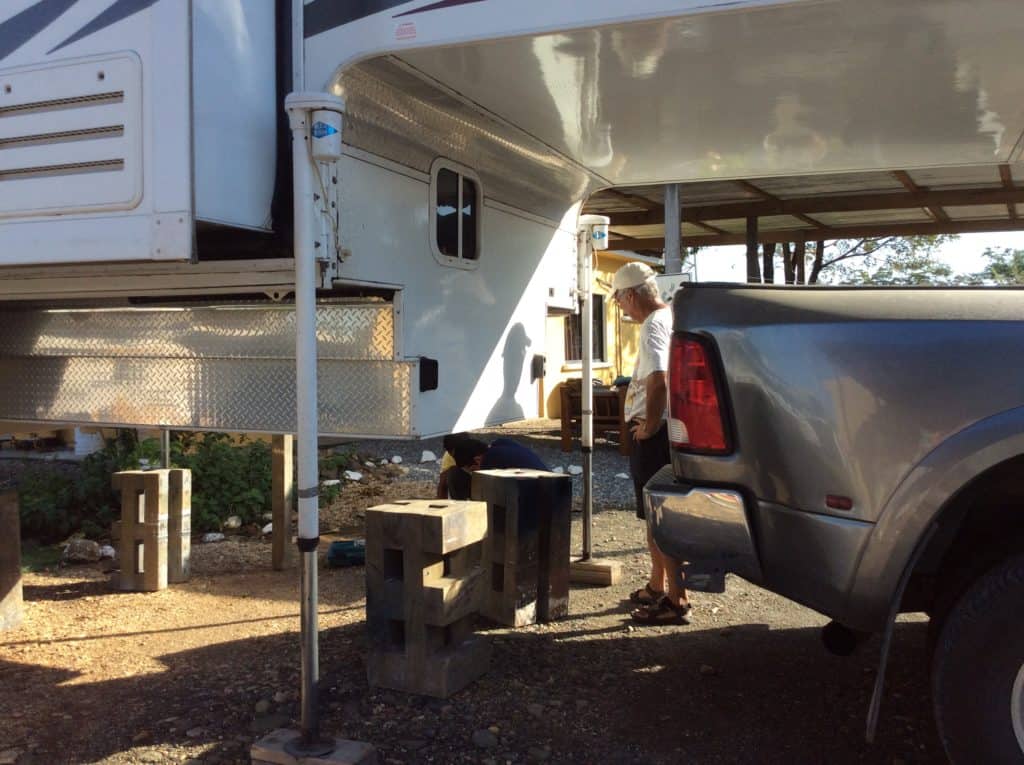
Chiquimula
Our drive from humid Rio Dulce was not as I expected. We came through the poorest part of the country and eventually arrived in flat, dry cattle country. Our new home was at Hotel Caballeriza in a field beside a huge pool. The best part was we were not alone. A German couple, Stefan and Petra, were parked here with their dog Mandu. Over the next three days of poolside camaraderie, late afternoon walks and evening drinks under the stars, a friendship was born. We learned that our new friends had been on the road for nearly 10 years, leaving Germany and driving through the middle east and on to Asia. They adopted Mandu, a street dog in Katmandu while spending time there. They shipped their vehicle from Korea to Uruguay and have spent the last six years working their way north. We feel like such newbies to the overlander lifestyle.
Plans were changed and we decided to go to Antigua together.
Antigua
Location, location, location. We parked in the Tourist Police compound which is in the center of town. It offers no camping amenities, but it does have the best security EVER. Antigua solved all my concerns on the first day, I got a haircut, found a self-service laundromat and located an English book exchange. All within a short walk! We found some amazing coffee shops as well. I had a hot caramel apple cider that tasted like a pureed cinnamon bun. Another day we had pan con chocolate which even surpassed those made in France.

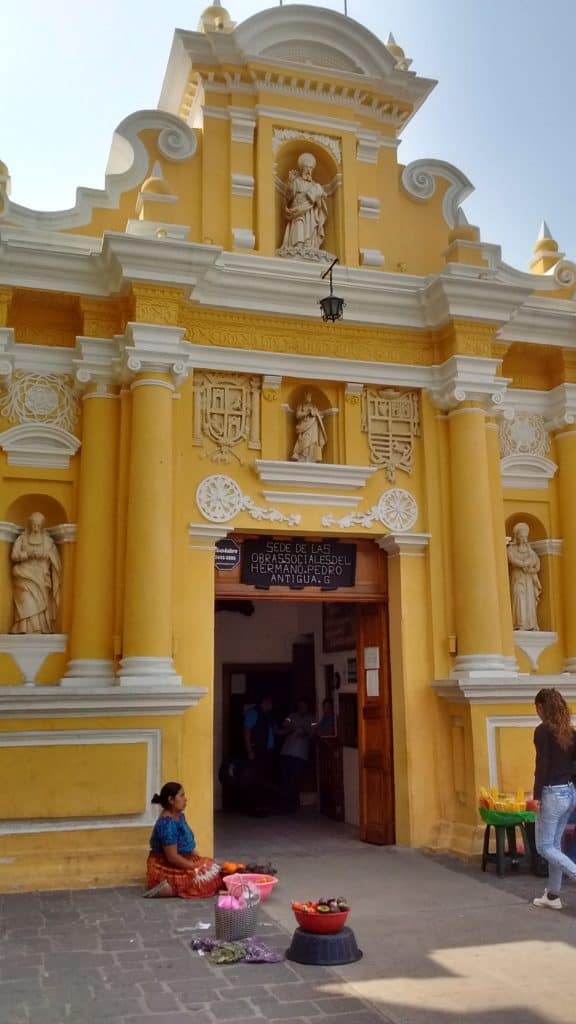
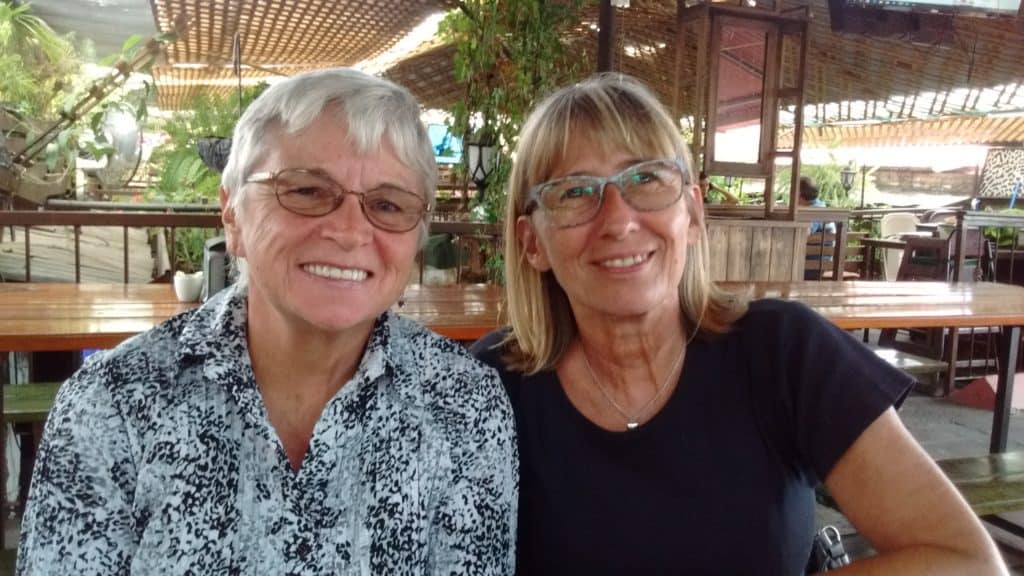
The shopping was surprising too, Guatemala has four colours of jade; green, black, white and lavender. Naturally, the prices escalate with their rarity. I bought a pair of earrings that are green stones with freshwater pearls. The Mayans were not just astronomers but astrologists, they have a symbol for each birth date. Mine is the Bee, coincidentally, my name in Hebrew means bee as well.
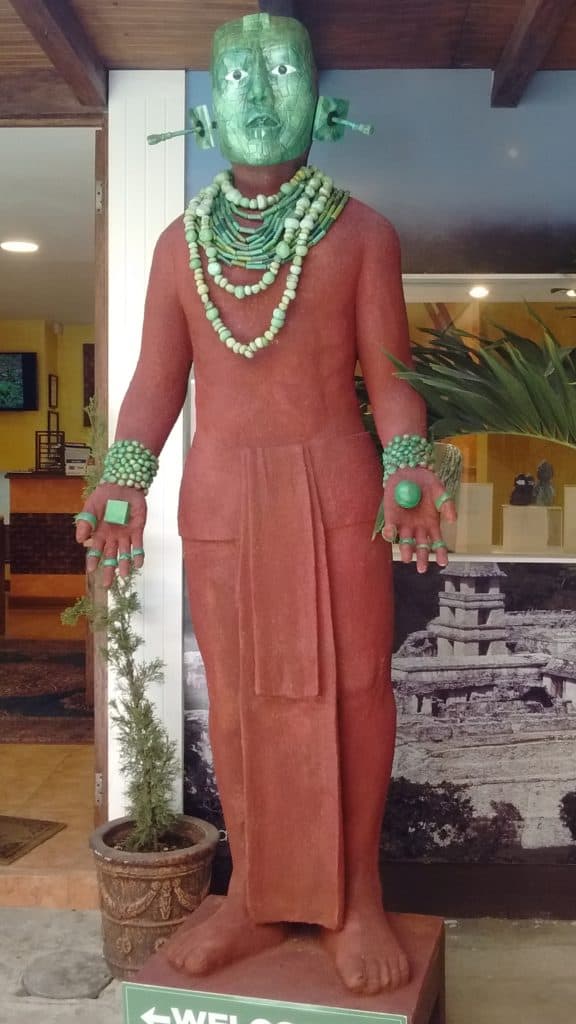
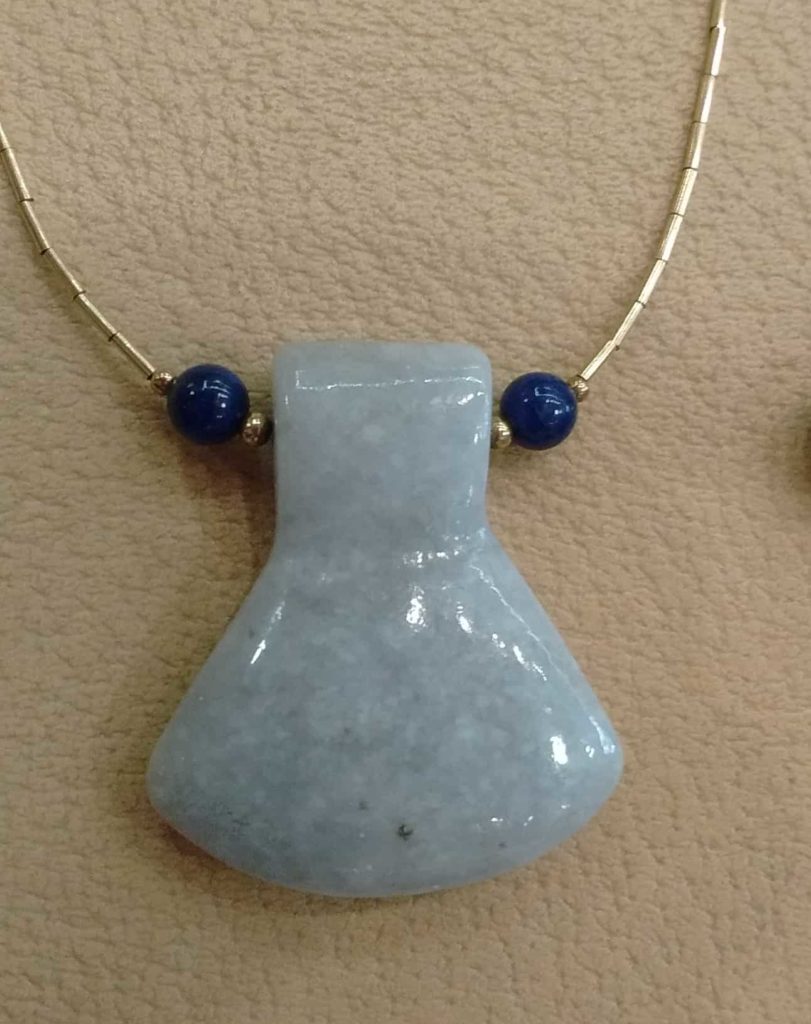
The true charm of Antigua lies in its ruins. This former capital was destroyed by earthquakes not once but twice. Many of the colonial churches, convents, monasteries and public buildings were too damaged to be fixed so many of these ruins now are stabilized and left to be admired. Some are slowly being restored but the costs are prohibitive. I think they are more interesting as they are, there seem to be lots of churches already. At night, many buildings are lit which is quite beautiful.
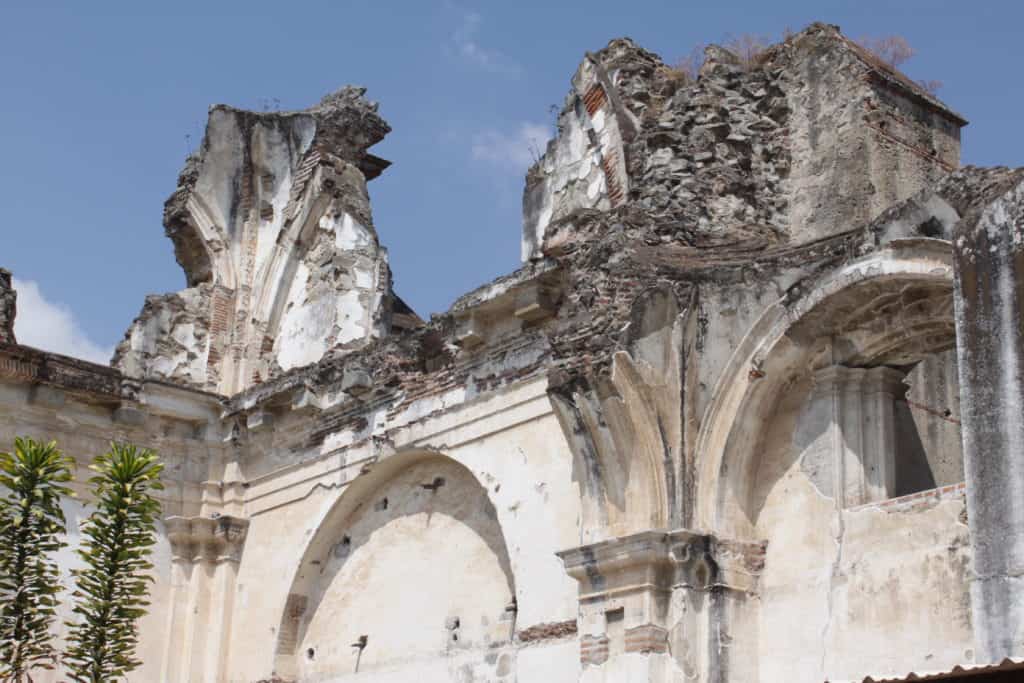
While Petra and I had some serious girl time, Doug and Stefan improved the earlier repairs to the tie down anchor. They also decided to repair and remount the camper bumper and step which had suffered more damage than we initially realized. (Remember those damn unmarked speed bumps mentioned earlier!) Stefan built their camper and fortunately carried a myriad of tools and supplies. He was very knowledgeable and his skills were in demand as he worked on several of the vehicles of other Overlanders. He even assisted the police with one of their motorbikes. We saw several campers from previous spots and met some new ones too. In between all this socializing, we explored Antigua. It is a lovely place with many things to see and do.

To thank Stefan for his help, we took them out for dinner at a colonial hotel. The restaurant was in a lush courtyard and the building had many levels and unique spaces. The food, the service and the company were superlative.
Central America is famous for their Chicken buses and we finally got our chance to travel in one. These are refurbished school buses from the USA. They are given wild and colourful paint jobs, then an inordinate amount of chrome is added. These are an art form unto themselves. They are just local transportation, but the drivers seem to tackle the roads with a need for speed or some road rage instinct. Rules do not apply to these caballeros, we found them to be formidable opponents on the highways. The workers certainly earn their money as they haul huge baskets, boxes and assorted items unto the roof and back down a few stops later.
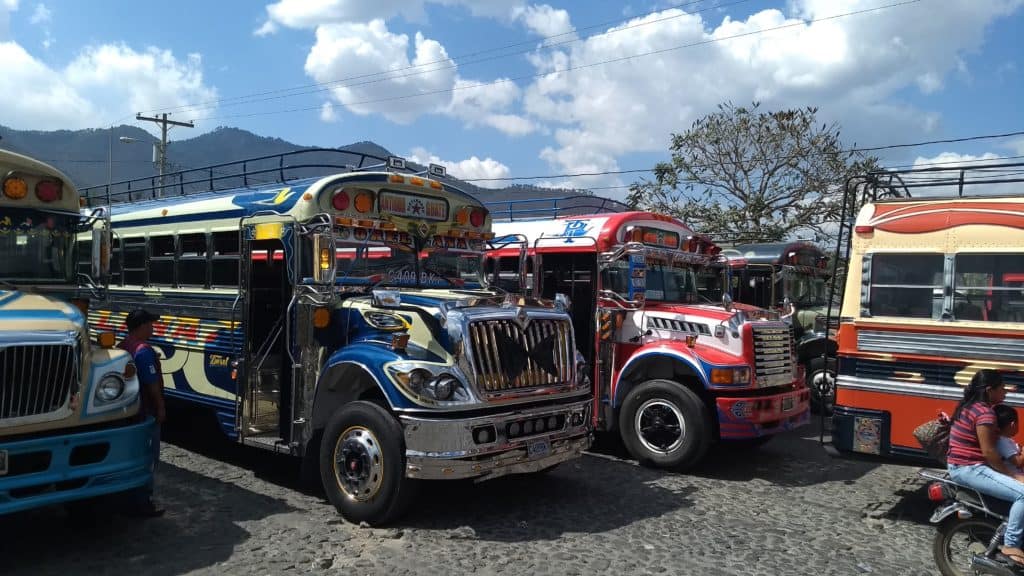
Valhalla
We had a wonderful day trip to Valhalla Macadamia Farm. This grove of 400 trees was planted 42 years ago by Lorenzo Gottschamer. The trees look after themselves and produce year-round. The gathering, drying and sorting are easily managed with minimum work, which begs the question, why doesn’t everyone have a Macadamia farm? The owner invented his own contraption to separate the nuts from their hulls and he named his machine The McGyver. All in all, it was informative and was followed by Macadamia Nut pancakes. The owner, now 80, joined us to chat. He’s an interesting fellow but opinionated and a bit rough around the edges.
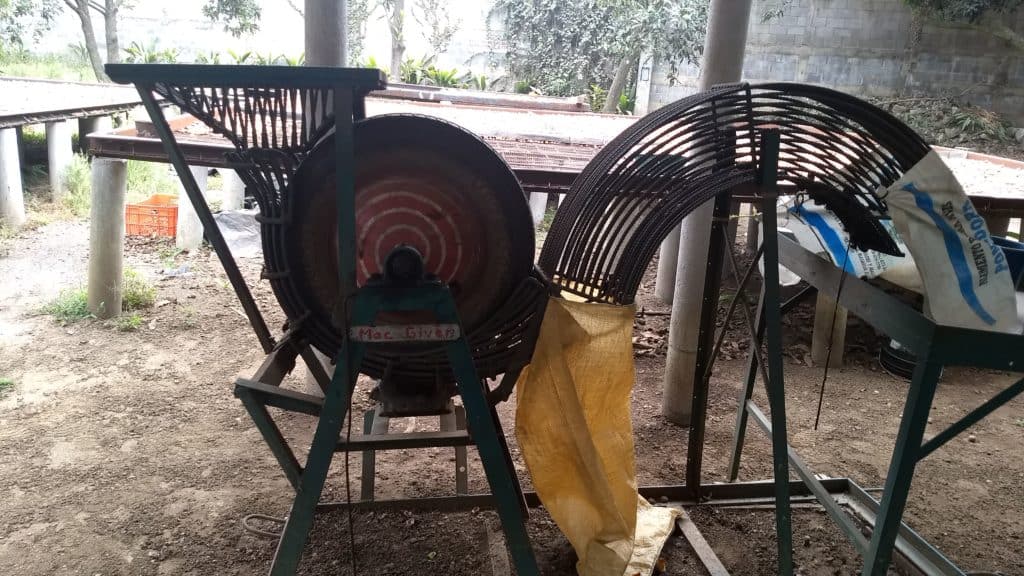
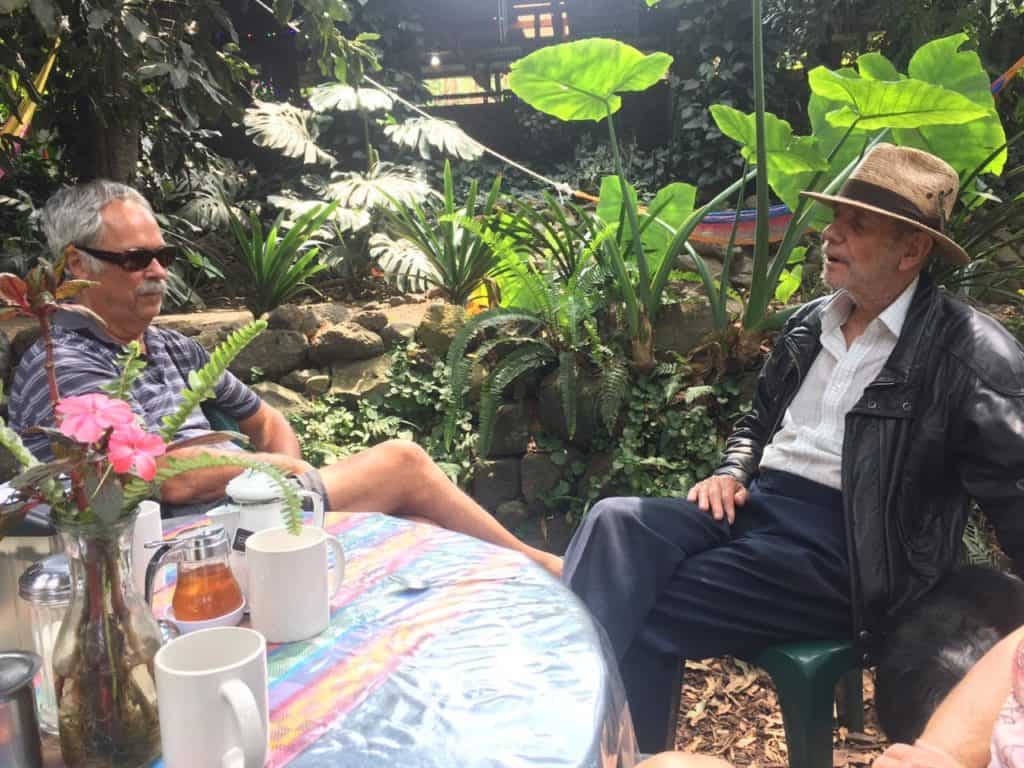
Our last outing with Petra and Stefan was to the Casa Santa Domingo Paseo de los Museos. This was a large complex of ruins, beautiful gardens and a luxury hotel. It proved to be a treasure. It was fun to just explore the grounds but even more exciting were the delightful variety of things tucked into all the corners. You could visit crypts beneath the former chapels, then discover a candle workshop where they still used the original tools and molds. My favourite part was a display of pre-Columbian pottery set beside modern glassworks (pottery bowl, modern glass bowl) This was old versus new in a very striking way. We were entertained for hours.

That night we had another fabulous meal with our friends and said good bye the next morning. Antigua will always be full of great memories.
Chiquimula
Chiquimula (Cheeky moolah), has been a great home for us. It was peaceful, clean and beautiful. I have never seen anything like it. The owner has pumped a ton of money into transforming an arid landscape into a playground. It has everything. There are three restaurants on site although only two are open right now. The pool area is huge, including cabanas on either side, a field for campers on the other, large clean restrooms and showers as well as food services. There are two soccer fields and a large basketball court. We have seen each of these used once. They have a farm area which also houses a mini zoo. There are two racetracks with a hotel for jockeys and a stable for the horses. There are at least ten horses there. They also have a drag strip for cars, a motocross track and a race area for 4×4’s. We saw all the preparations for a 4×4 competition. They set up bleachers, made a mud pit challenge course and had a huge number of tables and chairs under tents for all the food and drink. There are fields with cattle and trees have been planted to line the roads and surround each area. This is located about 10 km from the town, so it is definitely a destination resort. There are very few visitors during the week, but the pool and restaurants come alive on the weekend.
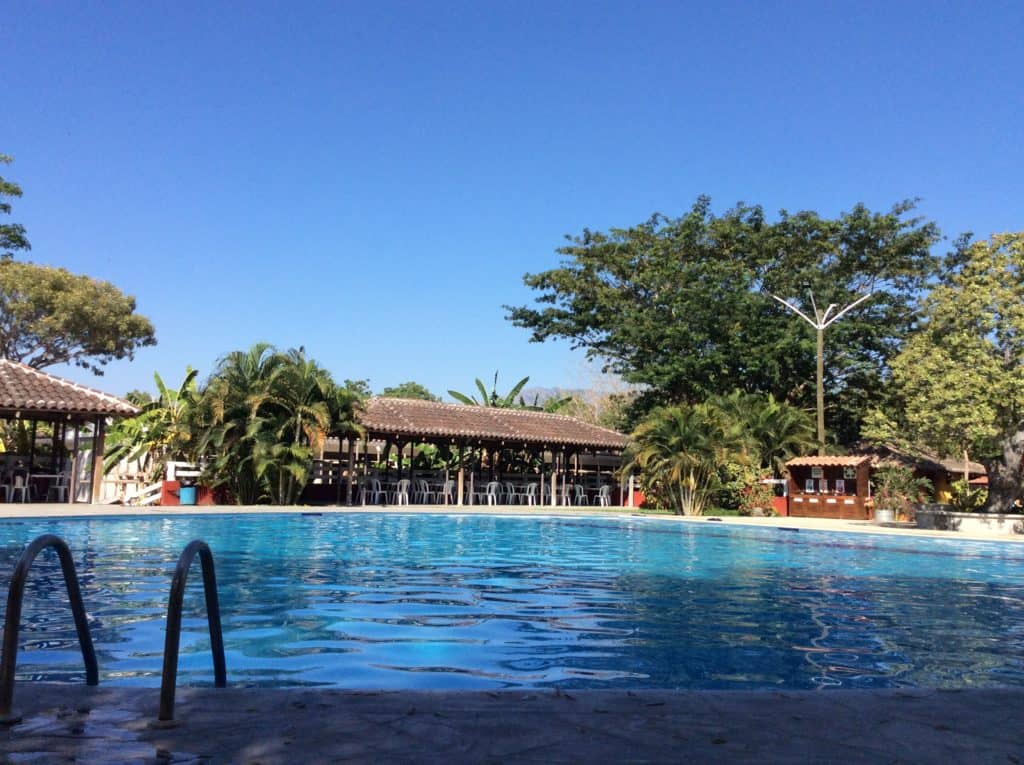
There is always something to watch, whether it’s people, animals or gorgeous flowers. I have enjoyed the tiny geckos, the lumpy toads and the great horned lizard who live poolside. One day a large lizard fell onto the cement with a very loud splat. We were quite startled, but he was only stunned. He soon reared onto his hind legs and sprinted away like Usain Bolt. I adore the young Brahman cattle, they are quite curious and allow themselves to be petted. The racing horses are very special. On our first walk with Petra and Stefan, one of them was laying on the grass and obviously in distress. He was recovered the next day, but I question the wisdom of racing in extreme heat. I have not been back to visit the zoo; the cages are tiny and bare, and the poor animals look lethargic and sad.
The people-watching has been fun. The clientele are obviously the wealthier locals judging by their vehicles and fashions. They are very family oriented so groups of ten with all ages is routine, the toys and paraphernalia take over the site. They always have several babies and toddlers which keep Doug and I quite amused, they are so cute. The variety of trees, flowering bushes and flowers is impressive. I have no idea what most are, but they are lovely, and the air is scented by their blossoms. One tree sends out seeds which are sealed as though they are in Saran Wrap. Who knew? I have seen few birds, but you do get to hear some very delightful songs. In the evening, we are treated to swarms of Olive Flycatchers over our field catching their dinner.
The staff work very hard here, long hours and high expectations are apparent. Our pool boy is an old cowboy who must be at least 70 and mostly toothless. He spends long days scooping leaves and bugs from the pool but on windy days this is excruciating to watch.
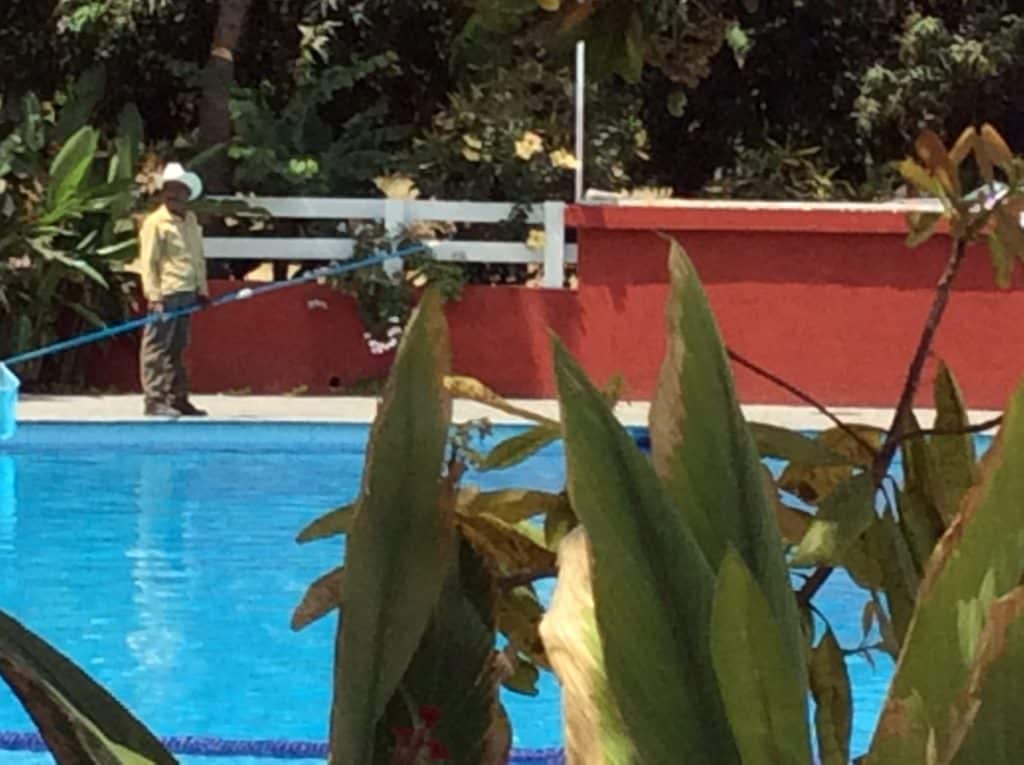
A young work crew are building more cabanas and on their lunch break they often play pickup soccer. This is only worth mentioning because the temperature is close to 40 degrees and they are wearing jeans, long sleeved shirts and gum boots. They don’t play too badly despite all this.
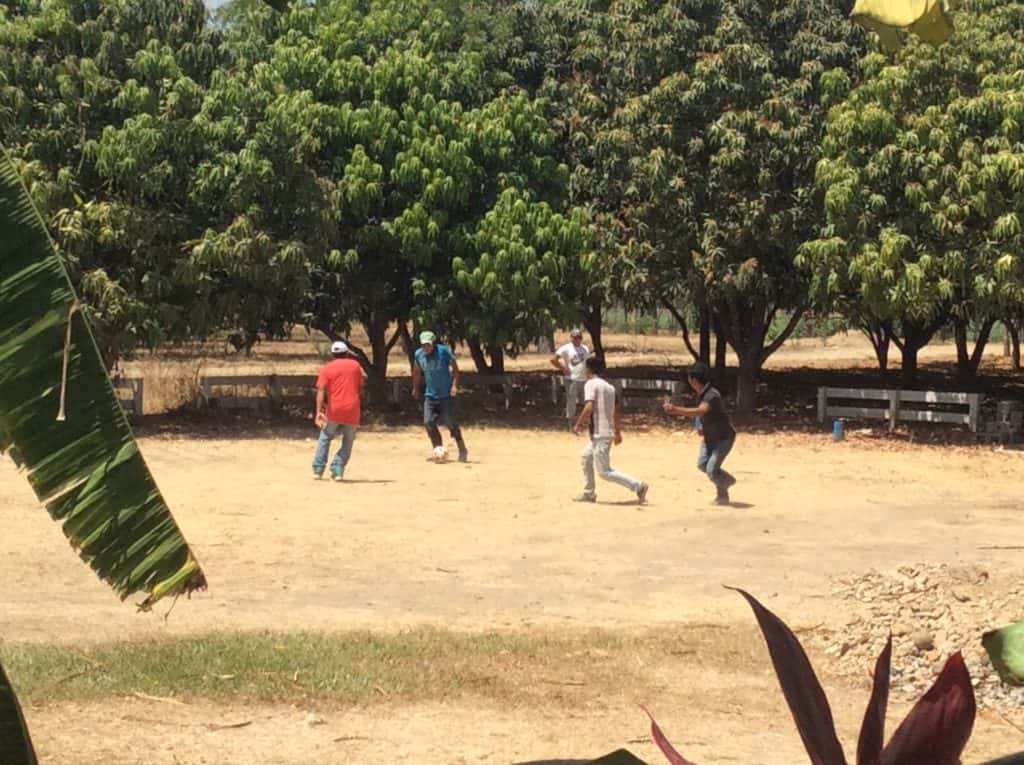
The Wi-Fi has not been perfect, but it has served the purpose. Doug has literally toughed it out on the wooden bench each day, completing our taxes and constructing the blog.
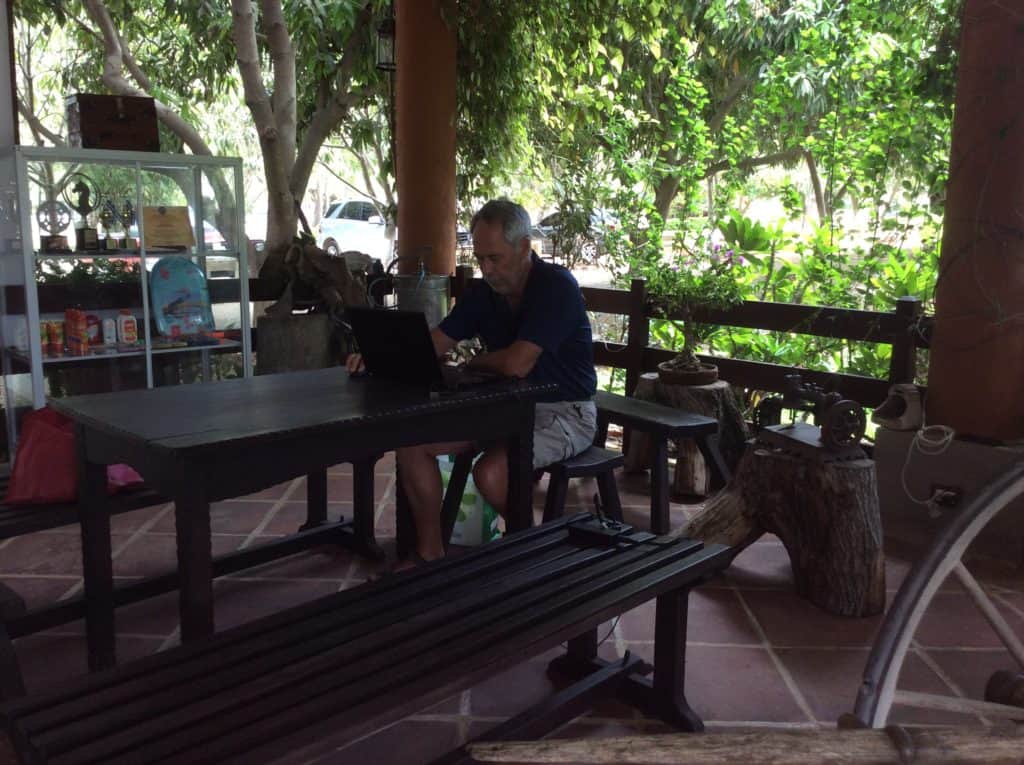
Our Route
